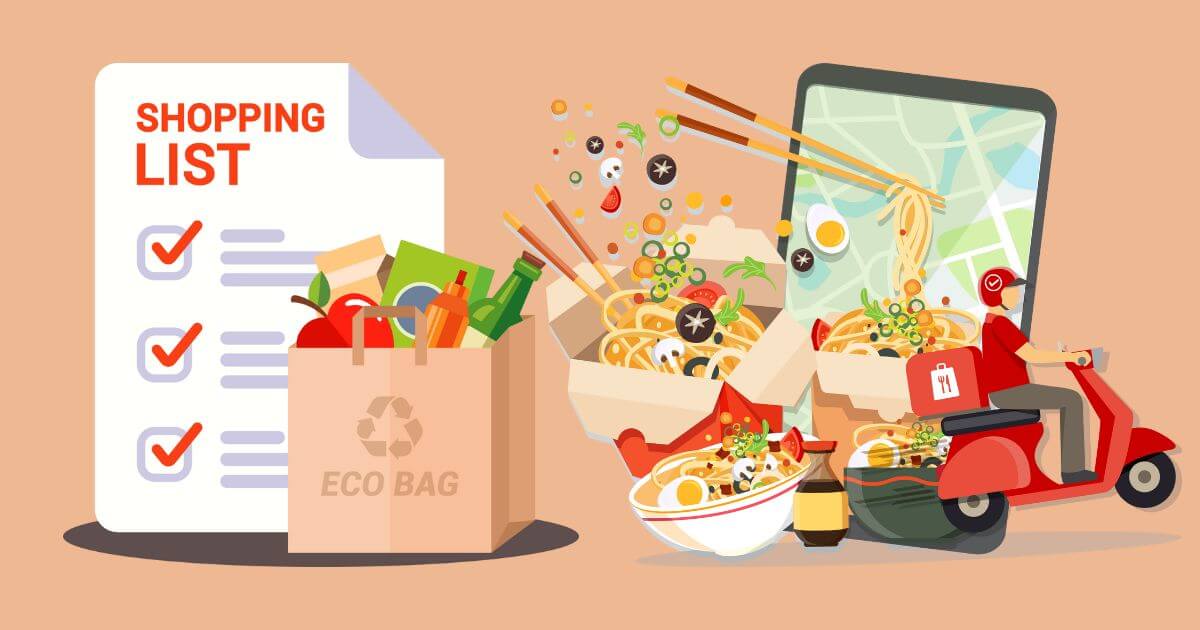How to Start a Blog That’ll Actually Make Money

This post may contain affiliate links which means that sproutinue.com may make a small commission at no extra cost to you. We only promote products that we love and feel will benefit our readers. Please read our Disclosure Policy for more information.
Today, the people making the most money are digital content creators and those running online businesses. Does the thought of earning a passive income excite you? Do you want to start your own blog? If so, you’ve come to the right place.
Millions of people have tried their hand at blogging, but some end up failing. Our step-by-step guide will cover how to start a blog for free from scratch and make money from it. While the thought of passive income is enticing, it takes a lot of work to get there. You’ll need persistence and focus to make your blog profitable.
What Is a Blog?
A blog is a website or online journal that displays information mostly in written form. Blog posts are typically written in the first person, with the blogger sharing their personal experiences or opinions on a given topic. As a blogger, you have the freedom to write about any topic you find interesting.
Writing about a topic you enjoy is a great way to connect with like-minded people. Additionally, the comments section allows readers to share opinions or ask questions and enables you to connect with your audience. Once you’ve gained your readers’ trust, it’s easy to make money from your blog.
How to Start a Blog and Make Money in 7 Steps
Starting a blog can seem intimidating for beginners. The more time you put into planning and preparing, the better your chances are of your blog succeeding in the long term.
It can be overwhelming to start something you know little about, which is why this guide breaks down blogging for beginners into simple, actionable steps.
1. Pick a Niche
Before you even start building your blog, you need to choose a blogging niche. A niche is a specific topic you’ll be writing about
You can blog about virtually any topic imaginable, so this first step shouldn’t be a problem. It usually goes hand-in-hand with coming up with your blog name.
It’s advisable to incorporate a word that represents what your blog is about since the name is what the readers will see first. For instance, if you’re blogging about travel, you can pick a name like travelwithdoe.com, which is very helpful for potential readers.
If you’re finding it hard to come up with a blog niche, consider the following:
- Your hobbies and passions: Writing about your interests is a great place to start. If you like drawing, hiking, or knitting, you can start writing about it. Writing about a topic you’re passionate about will give you the stamina to keep going since you’ll get to interact with like-minded individuals. No matter how obscure your hobbies are, your audience is global, meaning you’ll find your target audience.
- Create a personal blog: There are tons of successful personal blogs online. This can be a great option if you don’t want to pigeonhole yourself by writing about specific topics. A personal blog is about you, your thoughts, experiences, musings, and anything else you want to share with your audience. As you experience new things and interact with people, you’ll always have something to write about.
2. Choose a Blogging Platform
The success of your blog also depends on the platform you choose. There are several options to choose from and a handful worth considering. You can use WordPress, SquareSpace, Wix, or Medium.
WordPress is the most popular blogging platform for a good reason. It has a simple setup, you have full control over your site, and it’s the best for creating a profitable blog. In addition, it’s very user-friendly, with plenty of easy-to-use features.
You can start your journey with a simple “WordPress start a blog” internet search. There’s a bit of a learning curve to get the most out of WordPress.
To customize it, you’ll have to choose plugins and widgets and learn how to manage the backend. But everything is straightforward, and it takes a short time to learn the ropes.
3. Choose a Domain Name and Hosting
The next step in how to start a blog and make money journey involves choosing a domain name and a web hosting service.
This is the way to get your blog online. You cannot have a blog without a host unless you need to start a blog for free. The blogging platform we’re using in this guide is WordPress, which is the most customizable and easy to use.
The web host we recommend is DreamHost, mainly because:
- You get a free domain name when you register
- Free Secure Socket Layer (SSL) certificate
- Free automated WordPress migration
- They also offer a free WordPress website builder
- 100% uptime guarantee, so you don’t have to worry when your site goes down.
- 97-day money-back guarantee in case you’re unsatisfied for any reason.
How to Create Your DreamHost Account
You’ll need to complete a few simple steps, and your hosting account will be up and running.
(i) Select Your Preferred Plan and Domain Name
To start, click “Get Started” on the DreamHost shared web hosting page. Here, you have a couple of options to choose from. The plans offered are monthly, yearly, and three-year plans.
Next, choose a plan you prefer and click “sign up now.” If you choose an annual plan, you get a free domain. You can select your free domain name at this stage or do it later. DreamHost allows you to move your existing domain name (if you have one) into your new account.
Since you’ll most likely be creating a new name, click on “Register a new domain” to find an appropriate domain name for your blog.
(ii) Fill Out Your Payment Information
You’re now required to fill in your contact information and billing address on the registration page. Next, choose your most preferred payment method. DreamHost accepts all major credit cards and PayPal, so pick whichever is convenient for you.
(iii) Provide Your Primary Account Email
Next, you’re required to assign your primary account email, which is the email address you’d like to use for receiving important alerts and information regarding your account. There’s a convenient “Sign Up with Google” function to make the process easier.
iv) Submit the Order
Once you’ve made all the necessary selections and are happy with your options, click “Submit Order” at the bottom of the page. Once your order has been processed, you’ll get an email with a link to your WordPress page and instructions on accessing your admin dashboard.
The first time you visit your website, you’ll receive guidance on the WP Website Builder start-up wizard, and you can start designing your website immediately.
4. Design Your Blog and Customize
Once you have your blog set up, it’s time to design it to look great. Even without prior experience, creating your WordPress blog is easy. The best way to learn WordPress is by using it.
WordPress provides a wide variety of templates called “Themes,” which determine the outlook of your blog. There are thousands of free options, or you can opt for a paid theme.
Log in to Your WordPress Blog
The first step is logging into your WordPress blog using the details provided by your web hosting provider. All you need to do is enter your username and password in the required fields and click on “Log In.”
How to Change Your Blog Design
Once you’re logged in to your WordPress dashboard, you can make any changes you want. The themes control the design of your blog, so if you want a different outlook, you can change the theme. To do this, click on the “Appearance” tab on the page.
You’ll find a couple of pre-installed free WordPress themes to choose from, all professional-looking and well-designed. As a beginner, starting with any of these themes is advisable. Once you’ve settled on your most preferred theme, click the “Activate” button.
If you don’t find a theme you like from the pre-installed options, you can install a new theme by clicking on the same “Appearance” tab and then “Add New Theme.” This brings you to the WordPress theme search screen, where you can browse thousands of themes.
After finding the one you like, click the “Install” button and “Activate” to use it on your blog.
5. Write and Publish Great Content
Once you’re done with all the formalities, it’s time to do the actual work 一 blogging. For most, this is the fun part. Creating your first blog post on WordPress should be simple. The first step is to click “Posts” on the left menu. Typically, you’ll find a default post, which you should delete by clicking “Trash” under the post.
To begin your post, click on the “Add New”, and enter your post title in the top box and the rest of the post content in the box below. You can add images to your post by clicking on the “Add Image” icon followed by “Upload.” You can adjust the image size on the next screen before completing the process by clicking “Insert into post.”
Helpful Tips for Writing Great Content
Publishing great content is what will help you gain and keep loyal readers. All your blog posts should be informative, engaging, and helpful to your audience. This is your creative space, meaning you’re in total control, and you can mix things up once in a while to keep things interesting.
Here’re a few tips to help you create quality content:
- Your blog posts should be comprehensive: This means it should be highly informative but also easy to read. You’re trying to educate your readers, but it should retain its blog format and not look like a scholarly document. Ensure you use short paragraphs with spaces in between. Use headings, subheadings, images, and bullet points to make the post scannable.
- Always write original content: All work you publish on your blog should be original. Plagiarism is illegal and could cost you if you copy other people’s work. Getting inspiration and ideas from other bloggers is perfectly okay, but all your content should be unique.
- Use authoritative sources. Sometimes you have to do a little research before writing about a particular topic. To ensure you provide high-quality content, only use reliable sources like government websites, universities, research studies, or any other expert material. Any opinion you give should be backed up by relevant references.
6. Promote Your Blog
Once your blog is up and running, it’s time to get you some readers. Remember, tons of other blogs compete for your readers’ attention, which is why you need to spend a considerable amount of time promoting your blog.
Below are a few strategies you can employ to create a following for your blog.
Utilize Search Engine Optimization
You should optimize your site for search engines. Good SEO will get your blog ranking high on search engine result pages (SERPs), making it easier to increase traffic.
WordPress comes with several built-in SEO features, including a customizable URL, meta descriptions, and the use of page titles.
You can take it a step further with free Google SEO tools, which break down your blog traffic to show you how well your SEO efforts are performing.
Use Referrals
You can start by informing your friends, colleagues, and family members that you’ve started a blog, and they should check it out. These will be your first followers who’ll recommend your blog to others, and you can build from there.
Engage Your Readers
Engaging your visitors is a great way to get them to be regular visitors. You can do this by asking questions at the end of your posts. When your readers give their responses, reply to their comments as well. This shows that you care about them and helps build trust and loyalty.
Leverage Social Media
Social media is a great way to grow your readership. You can promote your blog on social media channels such as Instagram, Facebook, Twitter, and Pinterest.
7. Monetize Your Blog
People have different reasons for starting a blog, with the most popular being to make money. Making money with your blog is easy once you’ve created your content and promoted it.
You can make good money from your blog, but this could take some time, so you need to be patient. It will take dedication and persistence to grow your audience to the point where you can make a steady income from your blog.
Some of the ways you can monetize your blog include the following:
Affiliate Marketing
Most bloggers are members of affiliate programs, through which they earn a commission by promoting products. You simply include affiliate links in your posts, and when a reader clicks on the link, it sends them to the advertiser’s site.
If they make a purchase, you earn a commission. With affiliate marketing, you must disclose to the readers that you’re an affiliate for that product.
Advertising
Advertisers are always looking for advertising opportunities, and now you have advertising space, that is your blog. The easiest way to make the most of your advertising space is to use Google Adsense. All you’ll need to do is place the Google Adsense code on your blog, and Google will find advertisers to run ads on your blog.
Sell Products and Services
You can also utilize your blog to sell your own products and services. As your audience grows, selling products and services becomes easier. It’s advisable to use your blog sidebar to showcase visual images of your product and a link to your store.
Final Thoughts
Now that you know how to start a blog, all you need to grow a successful blog is passion and dedication. Provided you’re excited about the project and would love to engage with your readers, everything else comes later. Having fun while doing it is the best way to keep yourself motivated.
Read other blog writing examples, connect and collaborate with other bloggers, and do as much research as possible to improve your blog. This way, you’ll provide quality content for your readers and grow your audience as time passes.
How to start a blog FAQs
How Can a Beginner Start Blogging?
The first step is to pick a niche. Next, select a blogging platform. Once you’ve chosen a web hosting to get your blog online, choose your domain name. The next step is to customize and design your blog website. With all that taken care of, you can start writing and publishing your content.
How Much Does It Cost To Start a Blog?
You can start your blog without spending a dime. But if you’re looking to invest in your craft, you need to factor in the cost of your domain name. Domain names typically go for about $15 a year.
If you start your blog through a web hosting service, you’ll need to pay a monthly or yearly fee to get your blog online.
How Do I Start a Blog With No Money?
There are multiple free blogging platforms to choose from. If blogging is more of a hobby and you’re looking to start a blog for free, you can try Blogger, Medium, and even Tumblr. These are great platforms for practicing your writing skills as you get your name out there.
What Makes a Blog Successful?
The work you put into your craft determines the success of your blog. The effort you put into creating quality content that resonates with your audience will help grow your blog. Maintaining your passion and dedication to blogging will transform your blog into a success story.
How are Bloggers Paid?
Bloggers mainly make their money through advertising. The types of ads determine how the blogger is paid. For instance, Cost Per Click (CPC) ads generate income through clicks.
In other cases, the advertiser pays a flat fee for advertising space on a blog. Perhaps, the most common way bloggers are paid is through commissions from affiliate marketing.




